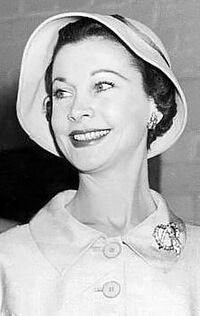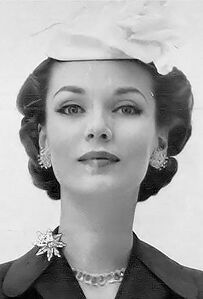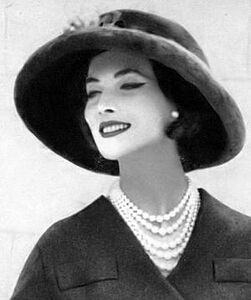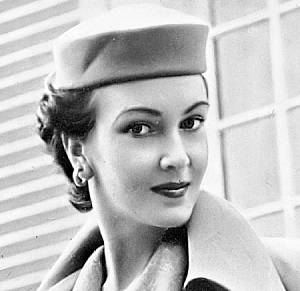Revolutionary Communications Office
| Abbreviation | RevCom |
|---|---|
| Formation | 1959 |
| Extinction | 1977 |
| Purpose | To advance the goals of the Golden Revolution and influence public opinion in its favour |
| Headquarters | Mayt, Envadra, Gylias |
Region served | Gylias |
Director | Marguerite Tailler |
Staff | 50.000 (1968) |
The Revolutionary Communications Office (French reformed: Bureau d'communications révolutionnaries or Bureau révolutionnaire d'communications), abbreviated RevCom (BCR/BRC), was a Gylian organisation, in existence between 1959 and 1977. Its main roles were to promote the Golden Revolution and to help coordinate the various social movements agitating for social revolution.
It was the brainchild of Marguerite Tailler, who served as its Director. It hired young women, provided them with education and intensive media training, and then employed them as public advocates on behalf of the revolution. These tasks included public speaking and television appearances in support of various causes, writing letters to various Gylian newspapers, contributing articles and essays to publications, and assuming roles as public intellectuals.
The RevCom contributed significantly to the growth of a "red–black intelligentsia", and held significant sway over Gylian public opinion at its height. Historian Nina Raukan described it as "a mélange of advocacy group, social laboratory, think tank, finishing school, quasi-modeling agency, and propaganda agency". It was at times controversial, with the conservative opposition criticising it as state-sponsored propaganda and a cronyist scheme, while some anarchists were similarly uncomfortable with its approach and special treatment of its workforce.
It was disbanded in 1977, when the Aén Ďanez government ended subsidies and official ties. Its staff then formed a loose network of successor organisations known as the Revolutionary Continuity Network (Réseau d'continuité révolutionnaire).
Etymology
Uniquely among Gylian organisations, the RevCom had two official names in French: Bureau d'communications révolutionnaries or Bureau révolutionnaire d'communications. As it was being set up, Penelope Morris recalled observing an argument between Marguerite Tailler and Julie Legrand as to which was more appropriate. Marguerite's preferred Bureau d'communications révolutionnaries was criticised by Julie for sounding too much like advertising, and Julie's preferred Bureau révolutionnaire d'communications was criticised by Marguerite for sounding authoritarian, or at least undesirably centralist.
In the end, the two compromised, giving the organisation a single English name and abbreviation, and adopting the dual abbreviation BCR/BRC in French. At a cabinet meeting shortly after, Penelope quipped, "Cursed syntactic ambiguity!".
History

The RevCom was founded in 1959 by Marguerite Tailler. Established during the National Obligation period, its aim was to systematise the existing links between movements for social revolution inherited from the Free Territories, and bring greater coordination to revolutionary propaganda and social engineering efforts.
Marguerite rejected the state-driven propaganda model of authoritarian regimes like the Ruvelkan Socialist Republic or Æþurheim. Instead, she favoured subtle persuasion, positive messaging, and maintaining a popular front strategy. She set up links with advocacy groups and created several front organisations, superficially devoted to benign causes but helping enlist moderates in defending the Golden Revolution. She once remarked, "These people believe they are actually doing this themselves. This belief must be preserved at any price."
The best-known aspect of the RevCom was its efforts to foster a "red–black intelligentsia". For this purpose, it hired young women, provided them with education and media training, encouraged them to pursue areas of interest, and employed them as campaigners, spokespersons, and public intellectuals. The resulting "army of well-educated and well-dressed young women" played a high-profile role in the Golden Revolution, and were nicknamed "Marguerite's mademoiselles". Another nickname was "model citizens", playing on their elegant wardrobes and positioning as representatives of the new society.
Aesthetically, the RevCom was a leading representative of socialised luxury, and it followed a Levystile ethos of combining political radicalism with a polished outward appearance. Its workers received generous pay and additional benefits such as free transport for work purposes. These factors created a distinctive internal culture, which Tomoko Tōsaka likened to "a university inside of a debutante ball inside a hothouse of ideas". Women hired by RevCom were encouraged to pursue their interests and enjoyed priority access to research material and official archives.
The RevCom enjoyed significant influence during the Golden Revolution. Its coordination and messaging played a significant behind-the-scenes role, and the public was fascinated by the organisation's culture and its success in recruiting good-looking, articulate, and sophisticated spokeswomen and public intellectuals.
The conservative opposition criticised it as state-sponsored propaganda and cronyism, while leftist skeptics attacked its perceived use of advertising techniques to create cultural hegemony. Both Maria Elena Durante and the Revolutionary Rally would make the RevCom a target for their populist demagoguery. Other commentators noted the risk of the RevCom's alumni becoming a managerial elite.
The RevCom was abolished by the Aén Ďanez government in 1977. Its staff and alumni then formed a loose network of successor organisations known as the Revolutionary Continuity Network (Réseau d'continuité révolutionnaire).
Structure
It was a voluntary association and a nonprofit. It was run along autonomist lines, with members electing a 5-member Administrative Board and 10-member Supervisory Board annually.
Marguerite consistently won election as Director throughout its existence.
Activities
RevCom employees were engaged in promotion of the Golden Revolution and social engineering efforts. These included regular canvassing (outside the context of election campaigns), participating in communal assemblies, starring in public information films and similar campaigns, appearing on television and radio as spokespersons, writing letters to the editor and op-eds for print publications, and publishing theoretical works that fit with the broader thrust of the Golden Revolution.
Janet Randy recalled that "most editorials and letters were written collectively and then we'd decide whose name to put on it, because we tried to keep everybody's name as equal as possible in the public eye. Pamphlets and books also had input from colleagues, since we'd always discuss what we were doing and thinking about."
Internally, the organisation was also comparable to a think tank as a "hotbed of ideas" that encouraged experimentation, individual interests, and advocacy.
Notable alumni
Famous RevCom-trained public figures included:
Marie-Hélène Arnaud, theorist of acid communism
Janet Randy, theorist of acid communism
Eleanor Henderson underwent RevCom training but declined to work for it directly in favour of pursuing an independent academic career.
Notable RevCom instructors included Isabel Longstowe, Tomoko Tōsaka, Doris Duranti, and Sima Daián.




